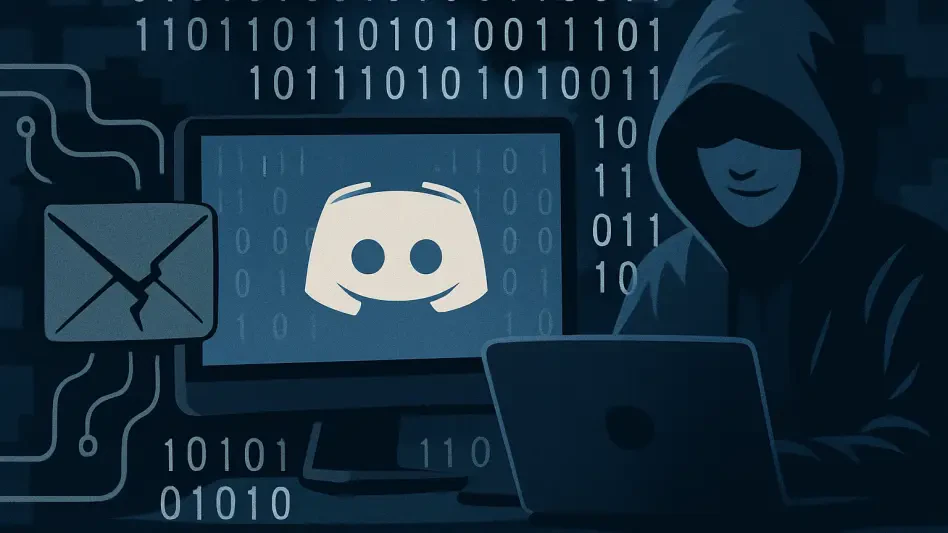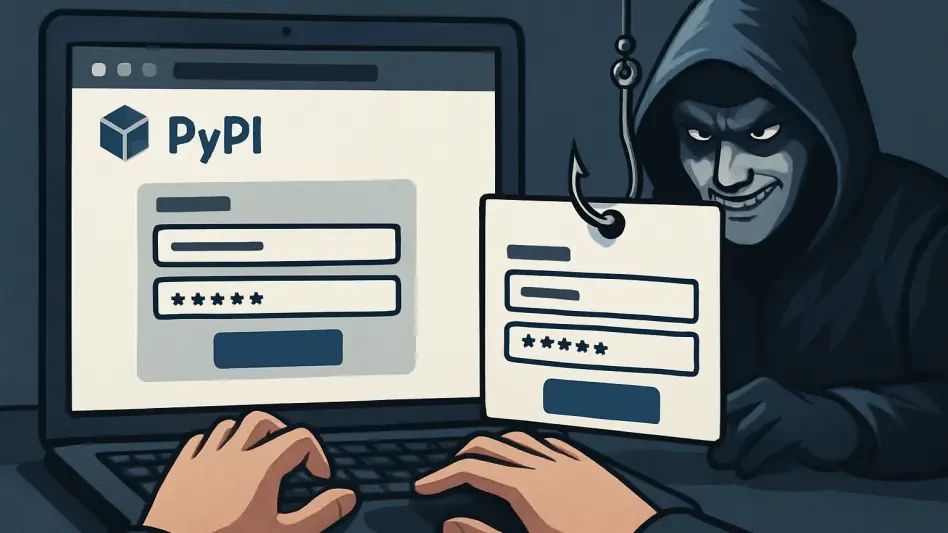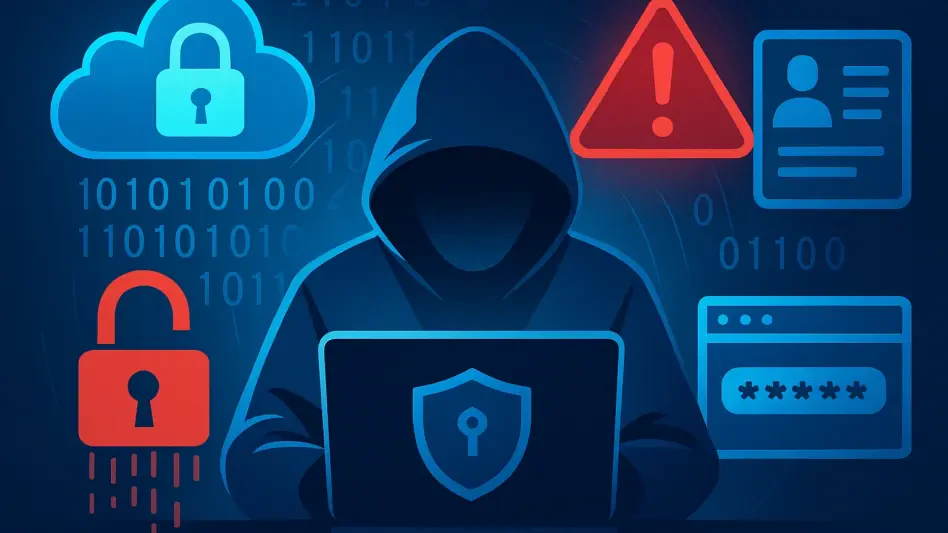In a digital era where communication platforms like Discord serve as vital hubs for millions of gamers and online communities, the recent confirmation of a significant data breach has sparked widespread concern and ignited critical discussions about cybersecurity. This incident, which did not stem from Discord’s own infrastructure but rather from a third-party customer service provider, has exposed sensitive user information, shaking trust in the platform’s ability to protect personal data. With an ever-growing reliance on such services for both personal and professional interactions, the breach raises pressing questions about the vulnerabilities inherent in outsourcing key operations and the broader implications for data protection in the tech industry. The fallout from this event extends beyond immediate user impact, challenging companies to rethink their security strategies and highlighting the urgent need for robust safeguards in an interconnected digital landscape.
Unraveling the Incident
How the Breach Unfolded
The recent data breach affecting Discord originated not from a direct assault on the platform’s core systems but through a vulnerability in a third-party vendor tasked with managing customer support and Trust & Safety ticketing. Attackers exploited compromised credentials of the vendor’s employees, gaining unauthorized access to sensitive user data stored within support records. This method of intrusion underscores a critical weak point in modern cybersecurity: the reliance on external partners who may not uphold the same stringent security measures as the primary organization. The breach, driven by motives of financial extortion, reflects a common tactic where malicious actors seek to profit from stolen data through ransom demands or illicit sales. This incident serves as a stark reminder that even platforms with robust internal defenses can be undermined by the security lapses of their extended network.
Delving deeper into the mechanics of the breach, it becomes evident that the attackers targeted a specific subset of data tied to user interactions with Discord’s support teams. By infiltrating the vendor’s systems, they accessed a trove of personal information submitted during ticket exchanges, exploiting a gap in oversight that allowed such a breach to occur undetected initially. The sophistication of this attack, leveraging stolen credentials rather than brute force hacks, points to the evolving nature of cyber threats where human error or negligence often plays a pivotal role. This case highlights the necessity for companies to enforce rigorous access controls and continuous monitoring across all touchpoints, especially when third parties handle sensitive operations. The implications of this breach extend beyond Discord, signaling a broader need for vigilance in managing outsourced relationships within the tech ecosystem.
Extent of Data Exposure
The scope of data compromised in this breach paints a troubling picture for affected Discord users, particularly those who engaged with the platform’s support services. The exposed information includes full names, usernames, email addresses, IP addresses, and the contents of support ticket messages, including any attachments shared during correspondence. For a smaller group, partial billing details such as payment types and the last four digits of credit cards were accessed, while a limited number of users faced the grave risk of having government-issued identification documents—like driver’s licenses or passports—exposed. These IDs, often submitted for age verification or identity confirmation, represent a high-value target for identity theft and fraudulent activities, amplifying the potential harm to those impacted.
Fortunately, critical elements such as account passwords and private direct messages remained secure, as confirmed by Discord in their official communications. However, the nature of the exposed data, especially personal identification documents, poses long-term risks that cannot be easily mitigated. Cybersecurity experts have voiced concerns over the potential misuse of such sensitive information, warning that affected individuals may face persistent threats of fraud or exploitation. This breach serves as a critical lesson in the importance of limiting the storage and sharing of high-risk data, even in seemingly secure support interactions. For users, the revelation of such exposure demands immediate action to safeguard personal security, while for platforms, it underscores the need for stringent data handling protocols across all operational layers, including third-party engagements.
Addressing the Fallout
Swift Containment Measures
Upon uncovering the breach, Discord acted promptly to limit further damage and address the immediate risks posed by the unauthorized access. The company revoked all access privileges for the compromised third-party vendor, effectively cutting off the attacker’s entry point into the system. In parallel, a reputable digital forensics and cybersecurity firm was engaged to conduct a thorough investigation into the scope and impact of the intrusion, ensuring no stone was left unturned in understanding the breach’s reach. Discord also adhered to legal and ethical obligations by reporting the incident to law enforcement and notifying data protection regulators under frameworks like the General Data Protection Regulation (GDPR) and state-specific laws such as the California Consumer Privacy Act (CCPA), demonstrating a commitment to compliance and transparency in crisis management.
Beyond these initial steps, Discord prioritized direct communication with affected users, sending notifications via official emails from a verified domain to inform them of the breach and its potential implications. These messages were carefully crafted to provide clarity on the nature of the exposed data while urging caution against phishing attempts that often follow such incidents. The transparency exhibited in these actions aligns with best practices for maintaining user trust during a security crisis, setting an example for how companies can handle sensitive situations. However, while these measures addressed the immediate aftermath, they also revealed the complexities of managing breaches that originate outside a company’s direct control, pointing to the need for deeper systemic changes to prevent recurrence. The response, though commendable, is only the first step in a longer journey toward rebuilding confidence among users.
Strengthening Future Defenses
In the wake of the breach, Discord has committed to implementing long-term security enhancements aimed at preventing similar incidents in the future. A key focus has been on tightening vendor oversight, with new policies mandating multifactor authentication (MFA) and enhanced endpoint monitoring for all third-party systems handling sensitive data. Vendors are now required to comply with recognized security standards such as SOC 2 and ISO/IEC 27001, which emphasize robust data protection practices and regular audits. These measures aim to close the gaps that allowed the breach to occur, ensuring that external partners meet the same high standards of security as Discord’s internal operations, thereby fortifying the platform’s extended ecosystem.
Additionally, the company has emphasized transparent communication as a cornerstone of rebuilding user trust, pledging to keep users informed about ongoing security improvements and any further developments related to the incident. This approach not only addresses immediate concerns but also fosters a culture of accountability, which is vital in an industry often criticized for opacity during crises. By integrating stricter controls and standardized frameworks into vendor relationships, Discord is taking proactive steps to mitigate third-party risks, a move that could serve as a model for other tech platforms. The focus on long-term prevention reflects an understanding that user confidence hinges on sustained, visible efforts to prioritize data protection, especially in an era of escalating cyber threats.
Broader Industry Challenges
Vulnerabilities in External Partnerships
The Discord breach is emblematic of a pervasive and growing challenge in the tech industry: the risk introduced by third-party partnerships. As companies increasingly outsource critical functions like customer support to external vendors, they expose themselves to vulnerabilities that may not exist within their own fortified systems. A recent industry report highlights a sobering statistic—over 60% of data breaches involve a third-party component, often due to lax security protocols or credential theft at the vendor level. This trend is not unique to Discord; similar incidents at companies like Okta in recent years, where session tokens were exposed through compromised support systems, and Twilio, where social engineering targeted outsourced partners, reveal a systemic issue that demands urgent attention across the sector.
This recurring pattern of breaches through external partners underscores the need for comprehensive supply chain security audits and adherence to standardized frameworks like NIST SP 800-161, which offer guidelines for mitigating risks in interconnected ecosystems. The reliance on third parties, while often cost-effective and operationally efficient, can become a critical liability if security standards are not uniformly enforced. Cybersecurity experts argue that organizations must treat vendor security as an extension of their own, conducting regular assessments and enforcing strict compliance to prevent weak links from being exploited. The Discord incident serves as a cautionary tale, urging the industry to prioritize third-party risk management as a fundamental pillar of cybersecurity strategy in an increasingly collaborative digital landscape.
Evolving Threats in Supply Chains
Beyond the immediate context of third-party vulnerabilities, the Discord breach reflects a broader escalation in supply chain attacks, where malicious actors target the weakest links to infiltrate larger systems. These attacks have become a preferred method for cybercriminals, as vendors often lack the resources or expertise to implement robust defenses comparable to those of major tech platforms. The sophistication of such tactics, often involving social engineering or stolen credentials, exploits human and systemic weaknesses rather than relying solely on technological breaches. This shift in attack methodology poses a significant challenge for organizations, as it requires a holistic approach to security that encompasses not just technical safeguards but also employee training and vendor accountability.
The implications of this trend extend to the entire tech ecosystem, where interconnectedness amplifies the potential impact of a single breach. As seen in parallel incidents across the industry, the cascading effects of a compromised vendor can disrupt operations and erode trust on a massive scale. Addressing this threat demands collaboration between companies and their partners to establish consistent security protocols, share threat intelligence, and respond swiftly to emerging risks. The Discord case highlights the urgency of adopting proactive measures to secure supply chains, ensuring that every component of a platform’s network is fortified against evolving cyber threats. Without such efforts, the industry risks a future where breaches become not just common but inevitable, undermining the foundation of digital trust.
Empowering Users Post-Breach
Safeguarding Personal Information
For users impacted by the Discord breach, taking immediate steps to protect personal information is paramount in mitigating potential harm. Those affected should closely monitor their email accounts and other online profiles for signs of unusual activity, such as unauthorized login attempts or suspicious messages that could indicate phishing attempts. For individuals whose government-issued IDs were compromised, additional precautions are critical—placing fraud alerts or credit freezes with major credit bureaus can help prevent identity theft. Changing passwords for any accounts that share credentials or contact details with Discord is also a prudent measure, even if passwords themselves were not exposed. These actions empower users to take control of their security in the aftermath of a breach that has left sensitive data vulnerable.
Moreover, users should remain vigilant against scams that exploit the publicity of such incidents, as attackers often pose as legitimate entities offering account recovery or compensation. Discord has explicitly stated that it will not contact users via phone or request sensitive information through unsolicited channels, a reminder to verify the authenticity of any communication claiming to be from the platform. The emotional and practical toll of a data breach can be significant, but proactive steps can significantly reduce the risk of further harm. By staying informed and acting decisively, users can navigate the challenges posed by this incident, reinforcing the importance of personal cybersecurity awareness in an age where data exposure is an ever-present threat.
Leveraging Available Resources
In addition to personal vigilance, affected users can benefit from resources and tools designed to assess and address data exposure. Discord has recommended utilizing free services like Have I Been Pwned, which allows individuals to check if their email addresses or other information appear in known breaches, providing a clear picture of potential risks. Such tools offer a valuable starting point for understanding the extent of one’s exposure and taking appropriate action. Beyond this, users are encouraged to explore identity protection services or consult with financial institutions for guidance on securing accounts tied to the compromised data, particularly if billing details were involved. These resources serve as a critical lifeline for those navigating the fallout of a breach.
Equally important is the role of education in preventing future vulnerabilities. Users should familiarize themselves with best practices for online security, such as using unique passwords across platforms and enabling two-factor authentication wherever possible. Discord’s guidance in the wake of the breach emphasizes the shared responsibility between platforms and individuals in maintaining a secure digital environment. By leveraging available tools and adopting stronger security habits, users can build resilience against the ongoing risks of data breaches. This incident, while unsettling, offers an opportunity to reinforce personal defenses, ensuring that the lessons learned translate into lasting protection against the evolving landscape of cyber threats.
Reflecting on Systemic Lessons
A Call for Industry Accountability
Looking back, the Discord data breach revealed critical vulnerabilities that had been simmering beneath the surface of third-party partnerships, exposing the fragility of trust in digital platforms. The incident, driven by exploited vendor credentials, demonstrated how even well-protected systems could be undermined by external weaknesses, a reality that had long been a concern among cybersecurity experts. Discord’s rapid response, from revoking access to engaging forensic teams, set a benchmark for transparency, but it also laid bare the broader challenge of securing an interconnected tech ecosystem. The exposure of sensitive data, particularly identification documents, had left users grappling with the specter of identity theft, a consequence that lingered long after initial containment efforts.
Charting a Path Forward
Moving beyond the immediate aftermath, the breach served as a catalyst for reevaluating how companies manage third-party risks, urging the adoption of stricter security standards and regular audits for all partners. For users, the incident underscored the importance of proactive measures—monitoring accounts, securing data, and using available tools to assess exposure. The tech industry, in turn, must prioritize supply chain security as a core component of its defense strategy, fostering collaboration to fortify every link in the chain. As cyber threats continue to evolve, this event highlighted the shared duty to innovate and adapt, ensuring that platforms and individuals alike are better equipped to face future challenges in safeguarding digital trust.








